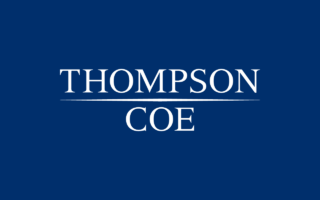Unsolicited Faxes Raise Coverage Issues
Apr 11, 2002
Enterprising lawyers have in recent years sought to take advantage of the increase in class action lawsuits and a little known federal statute, 47 U.S.C. § 227, popularly known as the Telephone Consumer Protection Act (“TCPA”), to file lawsuits on behalf of thousands of plaintiff businesses and individuals who have been the recipients of unsolicited facsimile advertisements.
An interesting aspect of the TCPA is that rather than collecting actual damages, a plaintiff may opt to recover a statutory penalty of $500. Given the large numbers of plaintiffs involved in these class action lawsuits, the exposure presented can be quite large. Insureds often seek coverage for these claims under their CGL policies. The allegations against the insured are typically that the insured has used fax machines or other devices to send unsolicited advertisements to the plaintiffs or has had others use such devices on the insured's behalf and with the insured's knowledge.
Plaintiffs typically allege that sending unauthorized facsimiles violates the TCPA, intrudes on plaintiffs' right to privacy and deprives plaintiffs of the full use of their property. In seeking coverage for these claims, insureds typically assert that the allegations of invasion of privacy trigger coverage under Coverage B of the CGL policy because invasion of privacy is a covered offense. Additionally, insureds claim that plaintiffs' allegations with regard to the loss of the full use of their property, i.e., their fax machines, is a claim for property damage covered by Coverage A. While these arguments for coverage sound plausible at first blush, there are good reasons why an insurer can take the position that there is no coverage for such claims.
The Type of “Invasion of Privacy” Asserted is Not Covered
In unsolicited facsimile advertisement lawsuits, there are typically no facts alleged to support the claim for invasion of privacy. In fact, the elements for the cause of action are often not adequately alleged. One of the basic tenets of insurance contract construction under Texas law is that the court must evaluate the factual allegations in the petition — not the legal theories pled. For instance, the mere fact that a negligence cause of action is pleaded does not bring a claim within coverage if all facts suggest the injury was not accidental. Likewise, the fact that the words “right to privacy” are included in the petition does not necessarily suggest coverage for “personal injury” or “advertising injury” exists if the facts pleaded do not support the claim. Indeed, an insurer can often contend that the petition does not even include the elements of a claim for invasion of privacy under Texas law.
Texas law recognizes three distinct torts constituting an invasion of privacy: (1) unreasonable intrusion upon one's seclusion, solitude or private affairs, (2) public disclosure of embarrassing private facts, and (3) appropriation of the plaintiff's name or likeness. The second and third torts both require publication to the public at large; the first has no publication element. In Cain v. Hurst Corp., 878 S.W.2d 577, 578 (Tex. 1994), the Texas Supreme Court has specifically declined to recognize a fourth type of invasion of privacy for “false light.”
There is usually no allegation in the unsolicited facsimile lawsuit that disclosure of any private facts or information about any of the plaintiffs has taken place. Likewise, there is usually no allegation that the insured appropriated the name or likeness of any plaintiff. Thus, the only possible tort which could give rise to an invasion of privacy would be the insured's unreasonable intrusion upon the seclusion or private affairs of plaintiffs. The elements of this form of invasion of privacy are: an intentional intrusion, into private matters or private areas, that would be considered highly offensive or objectionable to the ordinary reasonable person. There is no publication element to this tort.
Typically, there is no allegation that the material transmitted to the underlying plaintiffs was personal or offensive. In other words, it is the unsolicited receipt of the fax which the plaintiffs claim violates their right to privacy, not the publication of material. Since the tort of invasion of privacy by intrusion of seclusion does not have a publication element, and the plaintiffs do not usually complain of the publication of material, there is no coverage under the CGL policy.
The plain and ordinary meaning of “publication” is, “[g]enerally, the act of declaring or announcing to the public.” No personal or private information is usually disseminated by the insured, according to the petition. In fact, the only information transmitted is ordinarily advertising – information that is not even alleged to be offensive.
The courts that have addressed the publication necessary to state a claim for “personal injury” or “advertising injury” have rejected coverage for intrusion upon seclusion cases. In Duff Supply Co. v. Crum & Forster Ins. Co., 1997 WL 255483 (E.D. Pa. May 8, 1997), the court rejected coverage for similar allegations in conjunction with sexual discrimination claims. The underlying plaintiff alleged, in part, that the insured had monitored her phone calls, or allowed other employees to do so, and thus had invaded her privacy. The court concluded that, because the substance of the calls was not made public, the only privacy tort which could arguably be established was the tort of intrusion upon seclusion. The standard under Pennsylvania law is essentially the same as that under Texas law. The court focused on the requirement that there be an “oral or written publication” of material that violates a right of privacy. In response, the insured argued that the limitation to publication would essentially defeat coverage, as it was unlikely that an invasion of privacy, by virtue of intrusion upon seclusion, could ever be established within the requirements of a publication element. The court disagreed or, more accurately, found that this did not present a problem with construction. The court noted that “in this case, this limitation was clearly worded and conspicuously displayed. This clause only provides coverage for those torts for invasion of privacy which have a publication element. Thus, the claim for intrusion upon seclusion alleged in the. . .complaint is not covered by either of the primary umbrella policies.”
In Liggett Group, Inc. v. Affiliated FM Ins. Co., 2001 WL 1456995 (Del. Super., Sept. 12, 2001), the court addressed claims arising out of Liggett's direct marketing and advertising campaign, including allegations brought by the State of Texas. The court found that while advertising could invade one's privacy – intrusion upon seclusion – even if alleged, did not invoke advertising injury coverage.
In David v. Nationwide Mutual Ins. Co., 655 N.E.2d 1171, 1174 (Ohio Ct. App. 1995), the court found there was no coverage where the insured's employee made harassing comments to the underlying claimant but did not “publish” the comments to anyone other than the claimant. Additionally, in Fieldcrest Cannon, Inc. v. Fireman's Fund Ins. Co., 477 S.E.2d 59, 69 (N.C. Ct. App. 1996), the court found there was no “personal injury” coverage because the underlying complaint failed to allege that the insured's intimidating, harassing, and false comments were “made to anyone other than [the underlying claimant] herself.”
Likewise, there is often no “publication” of material alleged by the underlying plaintiffs in these types of cases. The general public does not receive personal information regarding plaintiffs. Once again, there is usually not even a complaint that the transmitted information, the insured's advertisement, was offensive. The insurer is in a very good position to argue that the plaintiffs do not sue for invasion of privacy, do not allege the elements of an invasion of privacy claim, and do not allege covered damage as a result of the insured's unsolicited transmission of faxes. This is because the petition does not complain of “oral or written publication” of material to bring the case within the coverage provided by the CGL policy.
Coverage Is Barred by the Willful Violation of Penal Statute Exclusion
Even if the allegations in the unsolicited facsimile cases could be construed to allege damages arising from covered “personal injury” or “advertising injury”, coverage may be excluded under the “willful violation of a penal statute …” exclusion found in the policy. The petitions usually allege that the insured committed willful or knowing violations of the TCPA. The statute is obviously penal in nature – explicitly providing that under Texas law, an offense is a Class C misdemeanor. In Decorative Center of Houston v. Employers Cas. Co., 833 S.W.2d 257, 263 (Tex. App. — Corpus Christi 1992, writ denied) the court held that because the insured's conduct amounted to a criminal trespass, the “willful violation of a penal statute” exclusion barred coverage even when no criminal charge was apparently made. Because the petition often alleges willful violation of the TCPA by the insured or by others with the insured's knowledge, the exclusion applies on its face.
There Is No Claim for “Property Damage” Caused By an “Occurrence”
Insureds sometimes assert that the allegations of loss of use constitute a claim for “property damage.” Certainly the allegation of loss of use of business opportunity is not “property damage” because it is an allegation of economic injury. In State Farm Lloyds v. Kessler, 932 S.W.2d 732, 737 (Tex. App. — Fort Worth 1996, writ denied), a claim for economic damage related to misrepresentation did not state a claim for covered “property damage.” Likewise, in Houston Petroleum Co. v. Highlands Ins. Co., 830 S.W.2d 153, 156 (Tex. App. – Houston [1st Dist.] 1990, writ denied) the court found no property damage where plaintiff sought damages for loss of initial investment, subscription funds and profits. There is usually no allegation in the petition claiming loss of use of tangible property or physical injury to tangible property to fall within the definition of “property damage.”
Moreover, the plaintiffs in unsolicited facsimile cases do not assert a claim for actual damages if they opt for the statutory strict liability penalty of $500. The statutory penalty is not “property damage” and is not tied to physical damage to property or loss of use of property. In Washington City Unified Sewerage Agency v. First State Ins. Co., 81 F.3d 171 (9th Cir. 1996)(unpublished), the court held that civil penalties were not “damages” because of property damage for recovery under liability policy. Additionally, in Travelers Ins. Co. v. Waltham Indus. Lab. Corp., 772 F. Supp. 814, 827-28(D. Mass 1988), aff'd in part and rev'd on other grounds, 883 F.2d 1092, 1099 (1st Cir. 1989), the court ruled that “[i]t is beyond peradventure that damages are distinct from penalties. The term ‘damages’ refers to the loss suffered by an injured party expressed in a dollar amount. Unlike damages, penalties are not designed to compensate an injured party, but are designed to deter conduct deemed undesirable by the legislature.”
Penalties are not covered by liability policies because they are not covered damage. Since the plaintiff class is often certified, at least in part, due to the commonality of plaintiffs' damages – i.e., the statutory penalty – the insurer can contend that there is no allegation of actual “property damage” to support coverage.
Even if a claim for “property damage” has been alleged, there is usually no indication that it was caused by an “occurrence.” “Occurrence” is defined in the policy as “an accident, including continuous or repeated exposure to substantially the same general harmful conditions.” As the transmission of faxes was undoubtedly intentional, any resulting loss of use does not arise from an “occurrence.” In Mid-Century Co. v. Lindsey, 997 S.W.2d 153, 155 (Tex. 1999), the court held that an injury is not the result of an accident if the injury was the foreseeable consequence of the insured's conduct. Receipt of the facsimile by a plaintiff – the injury complained of – is obviously the natural result of sending a facsimile. Therefore, the insured's conduct is not accidental.
In Trinity Univ. Ins. Co. v. Cowan, 945 S.W.2d 819 (Tex. 1997), the court held that just because the insured did not intend to cause claimant embarrassment by disclosing her photographs to others did not alter the fact that the insured's act of showing the pictures to his friends was intentional, and the claimant's embarrassment was the reasonably foreseeable consequence of his conduct.
Further, the CGL policy contains an exclusion which provides that the insurance does not apply to expected or intended injury. Because “property damage” would be the loss of use of the fax machine, an obviously expected result of sending facsimiles, the intentional act exclusion should apply to preclude coverage. See Butler & Binion v. Hartford Lloyds Ins. Co., 957 S.W.2d 566, 569 (Tex. App. – Houston [14th Dist.] 1995, writ denied).
Insureds sometimes contend that since the TCPA permits recovery in any violation, whether intentional, willful or negligent, a claim for damages caused by an “occurrence” has been pleaded. In fact, however, plaintiffs often allege that the transmission of unsolicited facsimiles was willful and intentional. Texas law requires a court to evaluate a duty of defense based upon the factual allegations, not legal theories, pleaded.
Thus, although negligent violation of the TCPA would support statutory recovery, the facts alleged often indicate that the damages were caused by intentional behavior. Thus, the insurer can assert that the claim is barred by the lack of “occurrence” and the intentional acts exclusion. In Farmers Texas Cty. Mut. Ins. Co. v. Griffin, 955 S.W.2d 81, 83 (Tex. 1997), the court held that even though claim was made for negligence and gross negligence, the facts alleged intentional behavior, thus, no coverage was owed. Likewise, in Wessinger v. Fire Ins. Exchg., 949 S.W.2d 834, 837 (Tex. App – Dallas 1997, no writ), the court ruled that where acts are voluntary and intentional and injury is the natural result of the act, the result is not caused by an accident even if the insured did not subjectively intend or anticipate the consequence.
The unsolicited facsimile advertisement cases are an example of insureds and their attorneys attempting to recharacterize new claims and causes of action to fit within the specific covered offenses or damages encompassed by the standard CGL policy. Insurers should expect similar litigation to increase in the future.







